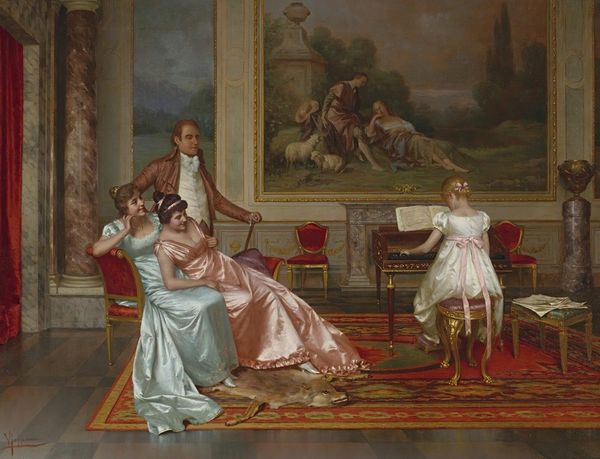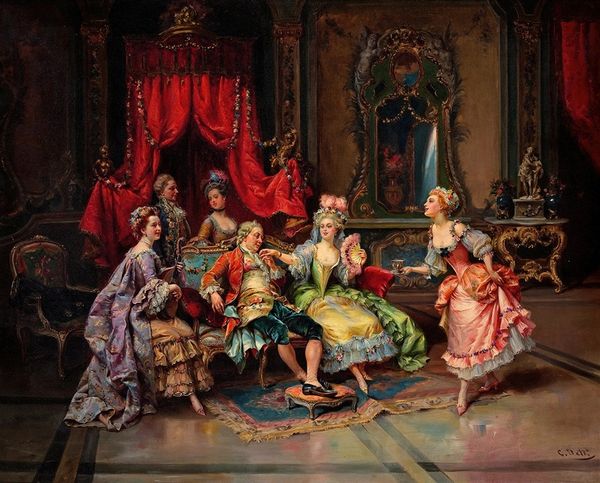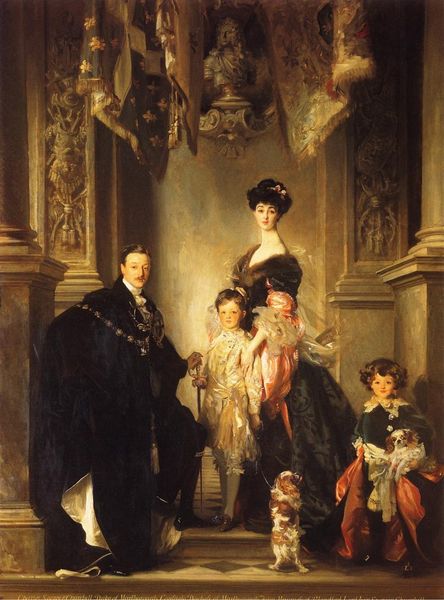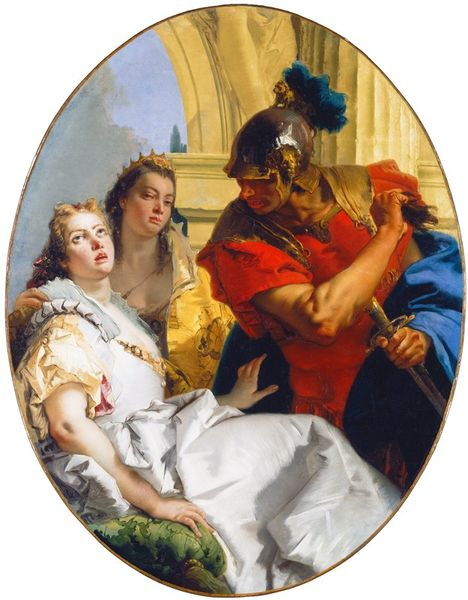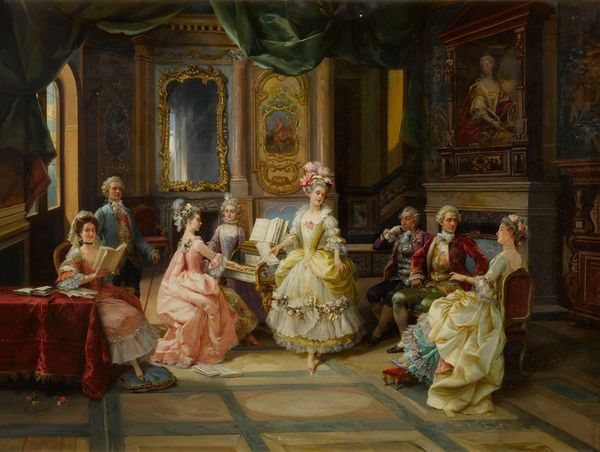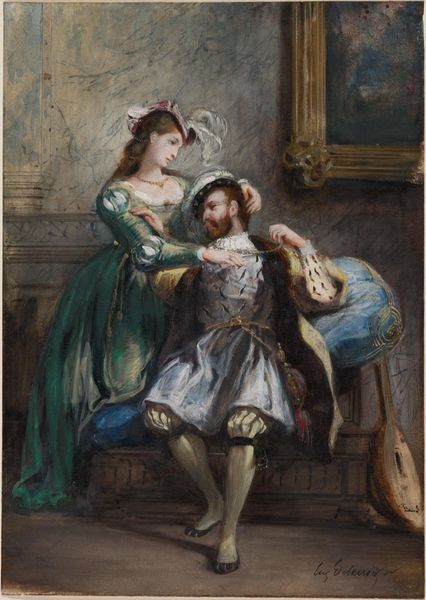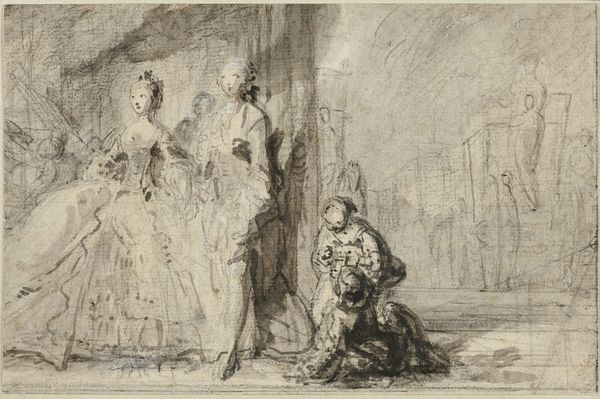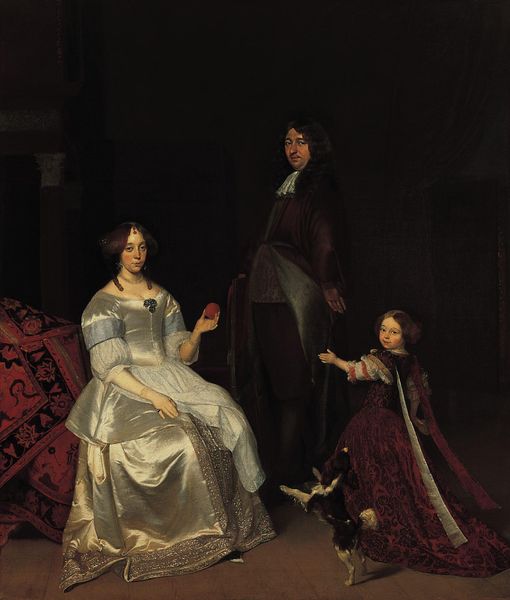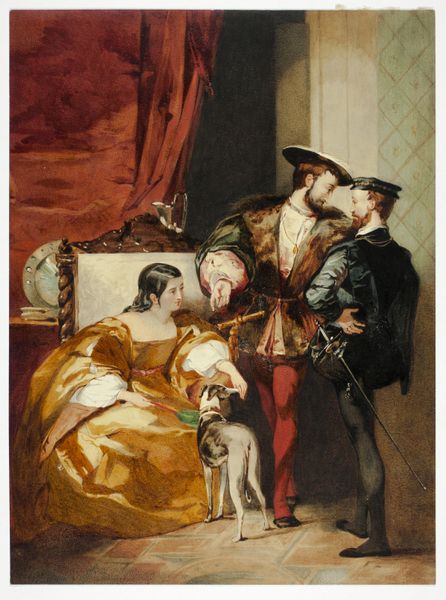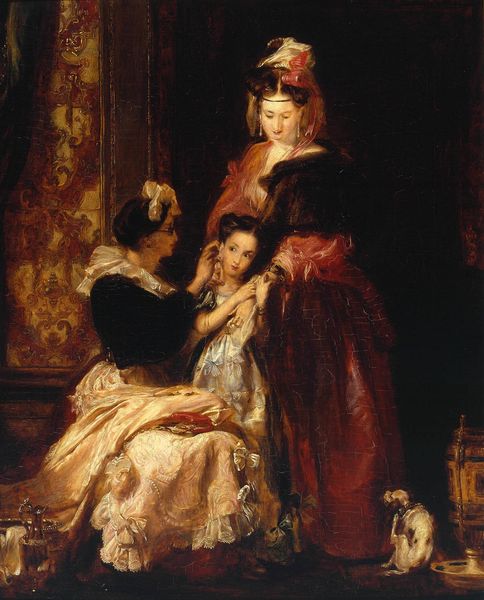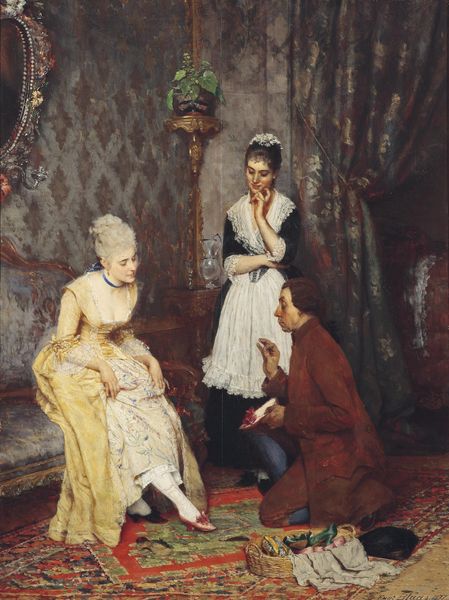
painting, oil-paint
#
portrait
#
narrative-art
#
painting
#
oil-paint
#
figuration
#
oil painting
#
group-portraits
#
genre-painting
#
history-painting
#
academic-art
#
portrait art
#
rococo
Dimensions: overall: 166.4 x 127 cm (65 1/2 x 50 in.) framed: 188.6 x 147.3 x 11.4 cm (74 1/4 x 58 x 4 1/2 in.)
Copyright: National Gallery of Art: CC0 1.0
Curator: Here we have Louis Joseph Le Lorrain's "Three Figures Dressed for a Masquerade," dating from around the 1740s. Editor: My eye is immediately drawn to the textiles—the sheen of the satin, the rough texture of the fur. It all speaks of incredibly skilled artisans at work. Curator: Absolutely. Lorrain situates this scene in the milieu of Rococo Europe, a world of elaborate courtly rituals and social display. Masks, as we see here, became symbolic tools of elite engagement. Editor: Think about what it took to create that impression! The labour involved—the dyers, the weavers, the furriers... Each contributing to this very manufactured scene of aristocratic leisure. Curator: These weren’t simply paintings. Works such as these helped reinforce aristocratic dominance in France and wider Europe during that period. Masquerades allowed a temporary suspension of the rigid social hierarchy. Editor: Temporary is the key word here. Because even behind those masks, class is being loudly broadcast, literally stitched into every seam of those luxurious garments. I bet they show-off in the masquerade while someone had been working very hard to produce that dress. Curator: To me, it’s about the visual drama. Notice the architectural setting, it provides a grand stage for these figures acting out roles within a controlled environment. Editor: Controlled, but within limits. The fact that you need a mask tells us about the social contradictions and performance expectations, doesn’t it? Hiding can be both oppressive and freeing. Curator: True, though in the 1740s, I'm more convinced that for some social levels, such artworks celebrated and promoted existing social structures, reinforcing power through displays of elegance. Editor: I guess when viewing works like this, my thoughts are always on what lay *behind* the glittering surface. It really makes you wonder what stories these opulent materials could tell if they could talk! Curator: Agreed; it gives a great window into how art served to mediate and mold society in times of great change.
Comments
No comments
Be the first to comment and join the conversation on the ultimate creative platform.
